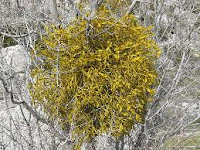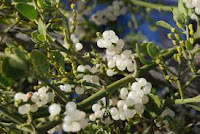Sunflowers can grow to 10 feet high and are very attractive to birds and butterflies as well as bees. I first saw a sunflower in a neighbour’s garden in Britain and was awed by its size (I was 2 years old). It was then pointed out to me that the black and white seeds the parrot my great-aunt’s friend owned ate sunflower seeds, and since then I have always thought of them as bird food, although I have eaten them as a snack with pumpkin seeds. They are often eaten in this way in Greece and Italy, but I can’t quite get rid of the thought of the parrot snacking on them.
I have since seen fields of sunflowers in Italy in Tuscany and the Marche regions and have been impressed with their sun turning abilities. They face one way in the morning and in the evening, on the return journey they face in the opposite direction; truly sun turners or girasole as they are called in Italian. Another member of the Helianthus (literally sun=Helios and anthus=flower in Greek) family is the Jerusalem artichoke, Helianthus tuberosus.
Sunflowers are native to the Americas and were domesticated by the Native Americans three thousand years ago. They were revered by the Aztecs and the priestess in the temples of the sun used to carry the flowers and wear wreaths of them in their hair. The Spaniards found delicately wrought golden sunflowers when they arrived in Peru in the 16th century. It was the conquistadores who were responsible for introducing the flowers to Europe in the 16th century where they were grown as curiosities.
 |
| Sunflower Seeds |
The oil yield of the seeds was increased by the Russians from 28% to nearly 50 % in the 19th century and now the oil is extensively used in cooking as it has a high smoke point and can be mixed with oils that have a lower smoke point such as olive and sesame oils. Sunflowers are also sources of biodiesel, but the cost of the oil prohibits it from being widely used as biodiesel currently.
The seeds and oil are rich in vitamins A and E and the oil may be used as a moisturizer for oily skins as it has drying properties, but improves the elasticity of facial skin.
No part of the plant is wasted as the stems are good for fuel when dry and the stems and leaves can be given to domestic animals as tasty fodder. The oil-cake left after the oil has been extracted from the seeds is also used as animal fodder. Even the flowers can be used to make a yellow dye.
 |
| Painting by Van Gogh |
Sunflower oil contains a high proportion of unsaturated fatty acids (90%) with the remaining 10% made up of saturated acids, palmitic and stearic. The oil is good as salad dressing, for cooking and is made into margarine.
The seeds have diuretic and expectorant properties and have been used to treat bronchial, laryngeal and pulmonary problems, as well as coughs and colds. The recipe for a cough medicine is given below. The tincture made from the seeds has been used to reduce fevers, while the leaves from the plant have been incorporated into some herbal tobaccos.
SUNFLOWER SEED COUGH MEDICINE
Ingredients
2 oz sunflower seeds
2 pints water
6 fl.oz. gin
6 oz sugar
Method
Boil the seeds in the water until it is reduced to 12 fl ozs.
Strain and add the gin and sugar stirring until the sugar dissolves.
Dose: 1-2 tsps 3 or 4 times a day.
This has Taste and is a Treat(ment).
















